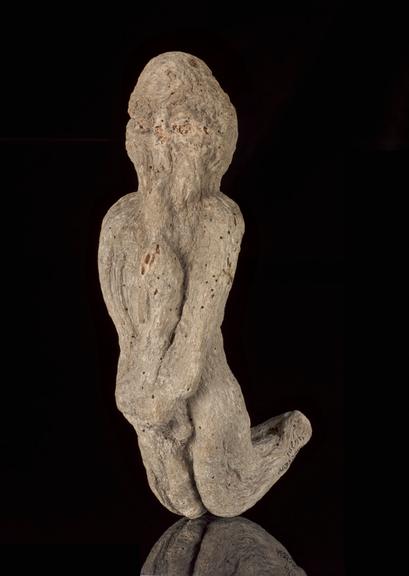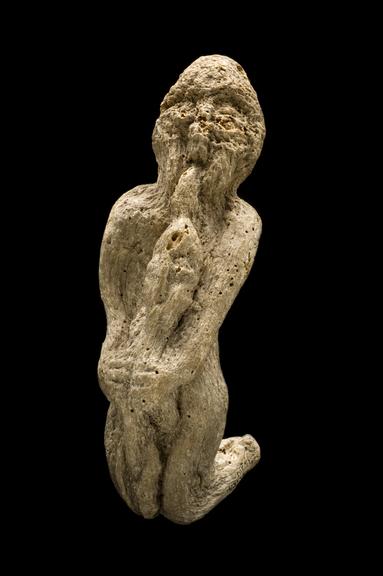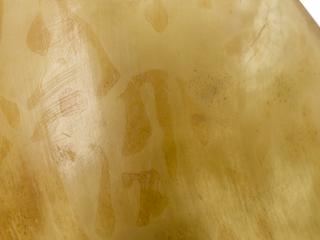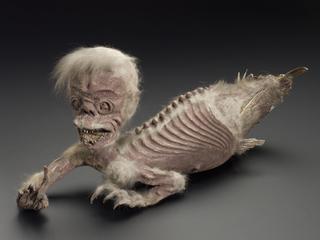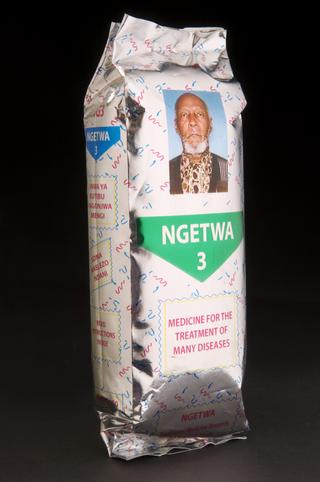



Specimen of mandrake root (Mandragora sp. (Solanaceae)), probably carved to enhance human resemblence, English, 1501-1700
Anthropomorphic objects are those whose shape resembles that of a human. They have often been attributed with special powers or healing properties. Mandrake roots have long been associated with pagan beliefs and magic rituals. They have also had a range of medical applications.
Such was the perceived resemblance to the human form that mandrake roots were said to scream when pulled from the ground. Medically, they were believed to improve fertility although in ancient Greece, wine infused with mandrake root was used to numb patients before surgery.
Details
- Category:
- Ethnography and Folk Medicine
- Collection:
- Sir Henry Wellcome's Museum Collection
- Object Number:
- A635030
- Materials:
- root, plant extract and complete
- Measurements:
-
overall (lying flat): 88 mm x 126 mm x 235 mm, .204 kg
- type:
- mandrake root
